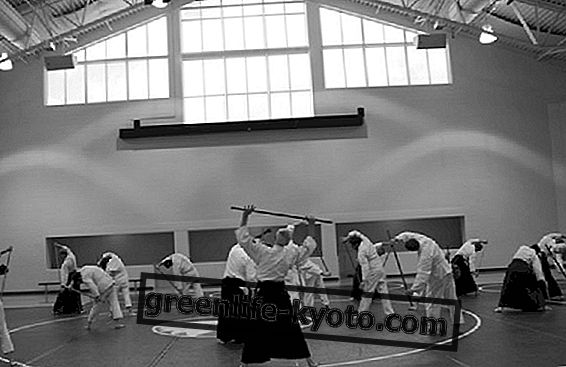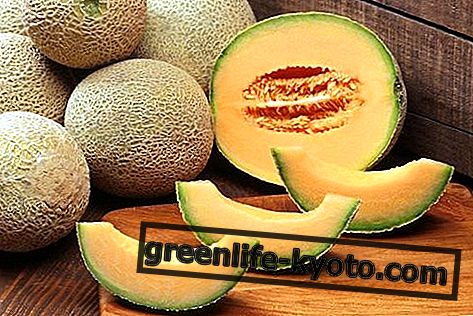
Martial arts can be distinguished by place and time of origin, but also by style and purpose. These are not simply sports but are real combat disciplines studied and applied with care, precision and control. Let's find out how to distinguish them and why choose to practice a martial art.
Difference by geographical origin
One of the main characteristics to distinguish martial arts from each other is undoubtedly the place of origin, if only because the national character gives specific characteristics in the way of fighting.
Many of the most famous and practiced martial arts originate in Asia, mostly in China (the whole great Kung Fu family), and then spread to Korea (Taekwondo and Hapkido) and Japan (Karate), where other notable martial arts they began (Sumo, Judo, Jiu Jitsu, Aikido).
However among the most ancient martial arts we have the Indian ones (like the Kalarapayuttu and the Indian struggle) that have had influence on the arts of South East Asia like the Indonesian Silat, the Vietnamese Viet Vovinam, the Muay Thai and the Muay Boran in Thailand.
We find a passion for fighting and for some styles of boxing also in Europe, in Africa and in South America, such as the Greco-Roman struggle, Pancrazio, Boxing, French Savate, Senegalese Laamb, Brazilian Jiu Jitsu and Capoeira .
In North America, relatively recent disciplines such as Jeet Kune Do, kickboxing, Grappling and MMA have originated. Russia contributes to the world of martial arts with Sambo and Systema.
Difference in style and purpose
There are modern martial arts and ancient martial arts, but mainly they are distinguished by style and purpose.
The martial arts that try to KO the opponent with strokes are called striking disciplines, while those in which they try to dominate the opponent, project it and subdue it without strikes are the styles of struggle.
The Kung Fu family is extremely variegated enough to contain several extremes such as Taijiquan, a sweet, aesthetic and internal style, and the Sanda very similar to a very practical kickboxing, which includes projections.
Taekwondo is a striking discipline based mainly on powerful and spectacular kicks, while Karate is a discipline born to resolve conflicts with a single blow. Judo, Jiu Jitsu, Aikido, Grappling and Brazilian Jiu Jitsu do not involve strokes but are based on imbalances, projections, knockdowns, levers and submissions.
The Viet Vovinam is an acrobatic discipline and much more aesthetic than practical, based on flying and multiple projections. Thai martial arts like Muay Thai is a complete striking discipline, also using elbows and knees, and very hard. Savate and Kickboxing are similar: striking disciplines without elbows and knees; Kickboxing uses all the punches while Savate develops many quick and unpredictable kicks.
Bruce Lee's Jeet Kune Do was one of the first attempts to evolve martial arts and create mixed martial arts, something that also happens in Sambo, where both strokes and projections are used, and in modern MMAs.
The educational-evolutionary value of martial arts for the youngest
Martial arts proper, combat sports, personal defense
The expression martial art means a combat discipline studied and applied with care, precision and control. It is a real art and one can devote oneself to perfecting it for life.
A combat sport, on the other hand, has a fundamental component that is athletic-competitive and mainly involves competitions with specific sports regulations.
As a sport, it can also be practiced for a relatively short period of time and its results always depend on training and physical fitness.
The styles defined as "self-defense" on the other hand sometimes do not involve any athletic part or require a particular passion or dedication, what they study are systems of maximum effectiveness with minimum effort, applicable by anyone in any situation.
Minor or particular martial arts
Martial arts also include all the arts that use weapons, so we can add to the list of arts such as the Kendo, which studies the sword, many Kung Fu styles based on Chinese sword, spears and halberds, the art of shooting with the Japanese bow, Ninjitsu, Silat, Kali and Kalaripayattu.
Other arts have a strong ritual, cultural and often musical component, as happens with Capoeira, Kalaripayattu, Mongolian struggle, Senegalese struggle, Sumo and Silat.
Some call themselves philosophical and devote themselves profoundly to meditation and the study of subtle energies or energy points, such as Aikido, Systema or Dim Mak.
Female martial arts: what are they?
To know more:
> The origins, practice and benefits of tai chi chuan













